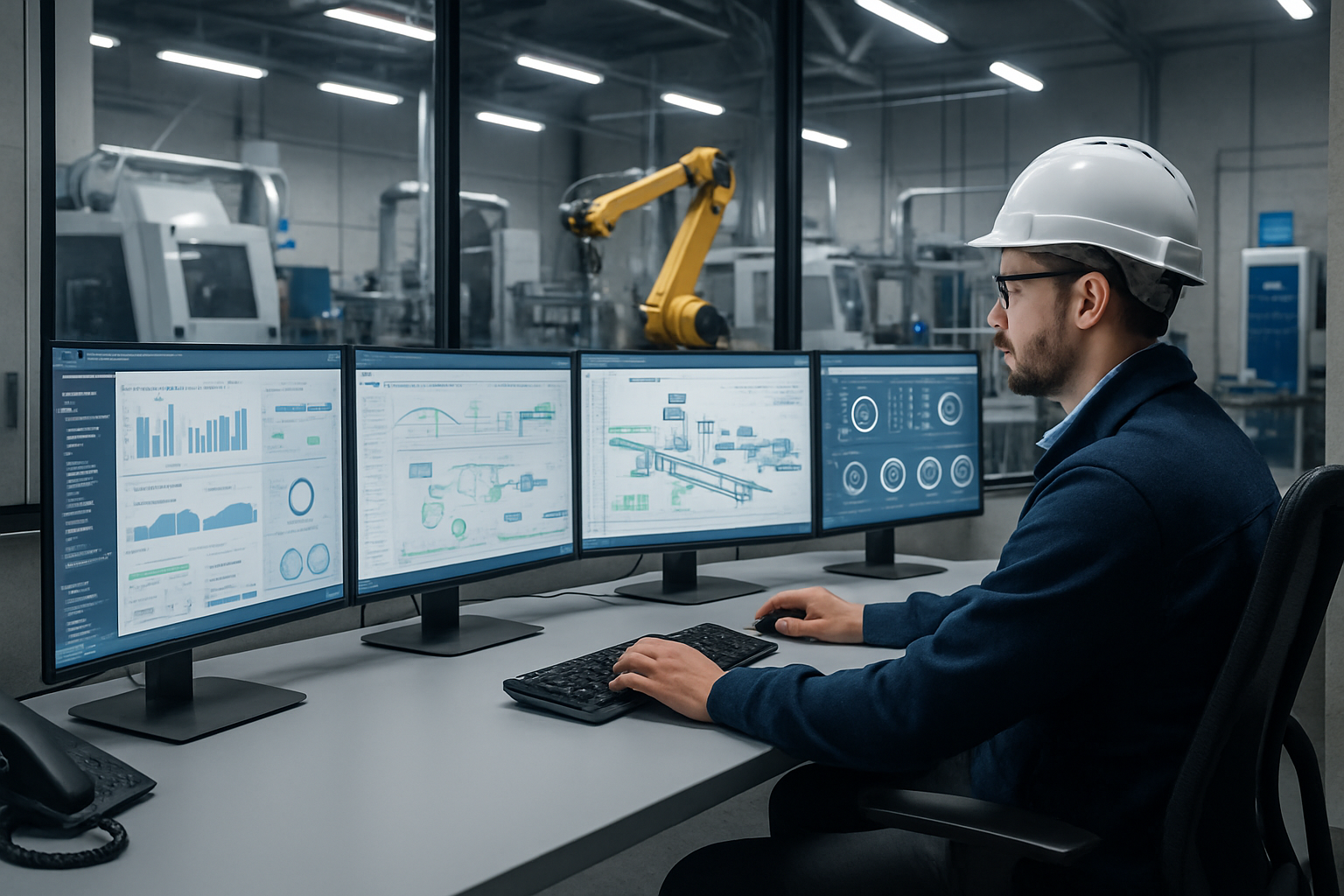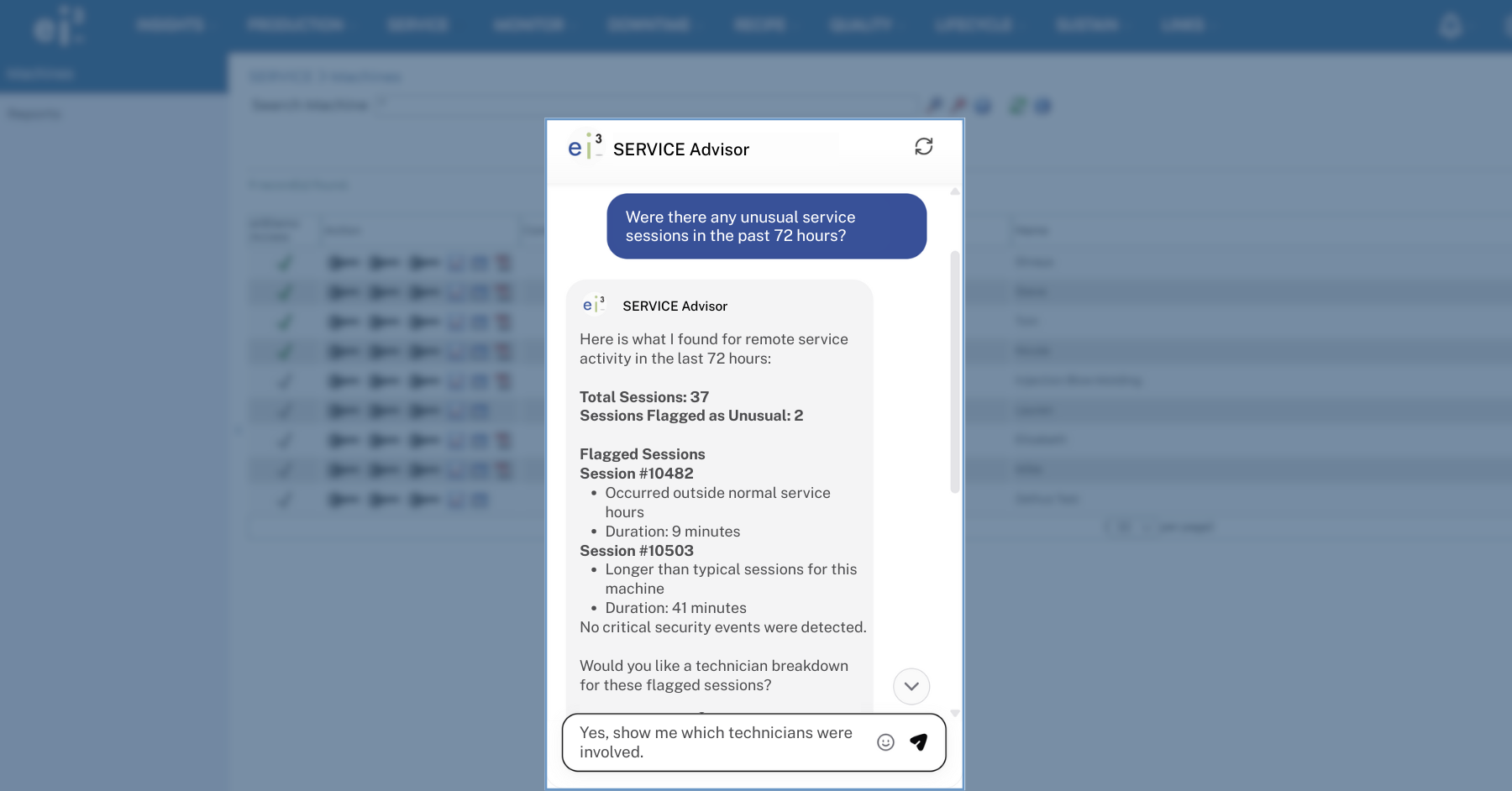Secure remote service bridges the gap between limited expert resources and growing demand for specialized machine support.
Owning an industrial machine—regardless of its size or complexity—often means relying on the machine's original equipment manufacturer (OEM) for expert service. Because OEMs build and design the machines, their service technicians are uniquely trained to offer specialized support that complements a local team's capabilities.
The service challenge: High demand, limited capacity
Experienced technicians who can quickly and effectively resolve issues are in short supply. These experts can only be in one place at a time, and traveling to job sites consumes both time and capacity. This means delays are inevitable—especially when the most experienced technicians are tied up elsewhere.
Machine owners understandably expect top-tier support when problems arise, but more often than not, it's a less experienced technician who is available. This gap can lead to longer resolution times and increased downtime.
With technician shortages and skill gaps becoming the norm, secure remote service is no longer a luxury—it's a necessity.
Every machine owner should have immediate access to their OEM's most skilled technicians, regardless of location. The question is: how can a small team of senior experts support customers worldwide, often on the same day?
The answer is secure remote service.
What secure remote service offers
Secure remote service gives authorized technicians the ability to safely access a machine’s controllers—such as PLCs and HMIs—without being onsite. These remote sessions are strictly controlled, typically using a dedicated device that manages secure access and ensures only authorized personnel can connect.
A leading approach to this is zero-trust architecture, which allows service access only under specific conditions defined and approved by the machine owner. Sessions are scheduled, enabled, and monitored by the owner, preserving both security and operational control.
Adoption barriers
Despite its advantages, remote service adoption remains low in many manufacturing environments. A key obstacle is the disconnect between IT and OT teams. In many cases, these groups fail to collaborate effectively during machine installation, resulting in machines that aren’t properly connected for remote access.
This breakdown in communication leads to costly consequences: machines sit idle, waiting for technicians who are hours—or days—away. Meanwhile, downtime costs accumulate.
A 2023 Organization for Machine Automation and Control (OMAC) survey found that 82% of respondents stressed the importance of strong IT/OT collaboration.
Yet, poor coordination continues to undermine remote access solutions in too many factories.
Building a scalable remote service strategy
Ideally, every new machine should come equipped with a remote service solution that’s scalable, secure, and easy to deploy. This means connecting to a zero-trust system that enables OEM technicians to deliver rapid support—often without ever setting foot onsite.
OEMs that have embraced secure remote access report a reduction of over 80% in technician travel. With fewer delays, issues can be resolved in hours instead of days, significantly reducing downtime and service costs.
To make this vision a reality, machine owners should:
-
Require a remote service plan from OEMs that is secure, scalable, and simple to implement.
-
Ensure IT and OT teams collaborate early in the machine installation process, with the proper network setup, hardware, and cabling in place from day one.
-
Connect every machine immediately upon installation to support future remote troubleshooting and upgrades.
Choosing the right technology for remote access
It’s not enough to simply enable remote access—it must be done securely. Machine owners should deploy devices that are:
-
Managed as part of a secure, global network
-
Updated regularly by the remote service provider, not manually by the local IT team
-
Equipped with protections against known vulnerabilities, including immediate patches when security threats are discovered
Using unmanaged or manually maintained devices introduces unnecessary risk and increases the burden on internal IT teams. Each additional machine adds more complexity—and cost—to maintain secure configurations locally.
Why it matters now more than ever
If operational efficiency isn’t enough to drive interest, consider the broader impact: service technician travel adds to your company’s carbon footprint. As manufacturers aim to reduce emissions and embrace sustainability, remote service offers a smart, environmentally responsible solution.
It also aligns with growing expectations around Environmental, Social, and Governance (ESG) reporting. Highlighting reduced emissions and smarter resource use adds long-term business value and signals a strong commitment to responsible practices.
As service models evolve, machine owners must prioritize secure remote access using a globally managed, secure network. This isn’t just about convenience—it's about preparing for the future.
By demanding secure connectivity and driving IT/OT collaboration, machine owners can increase uptime, reduce costs, and create more resilient, sustainable operations from day one.





